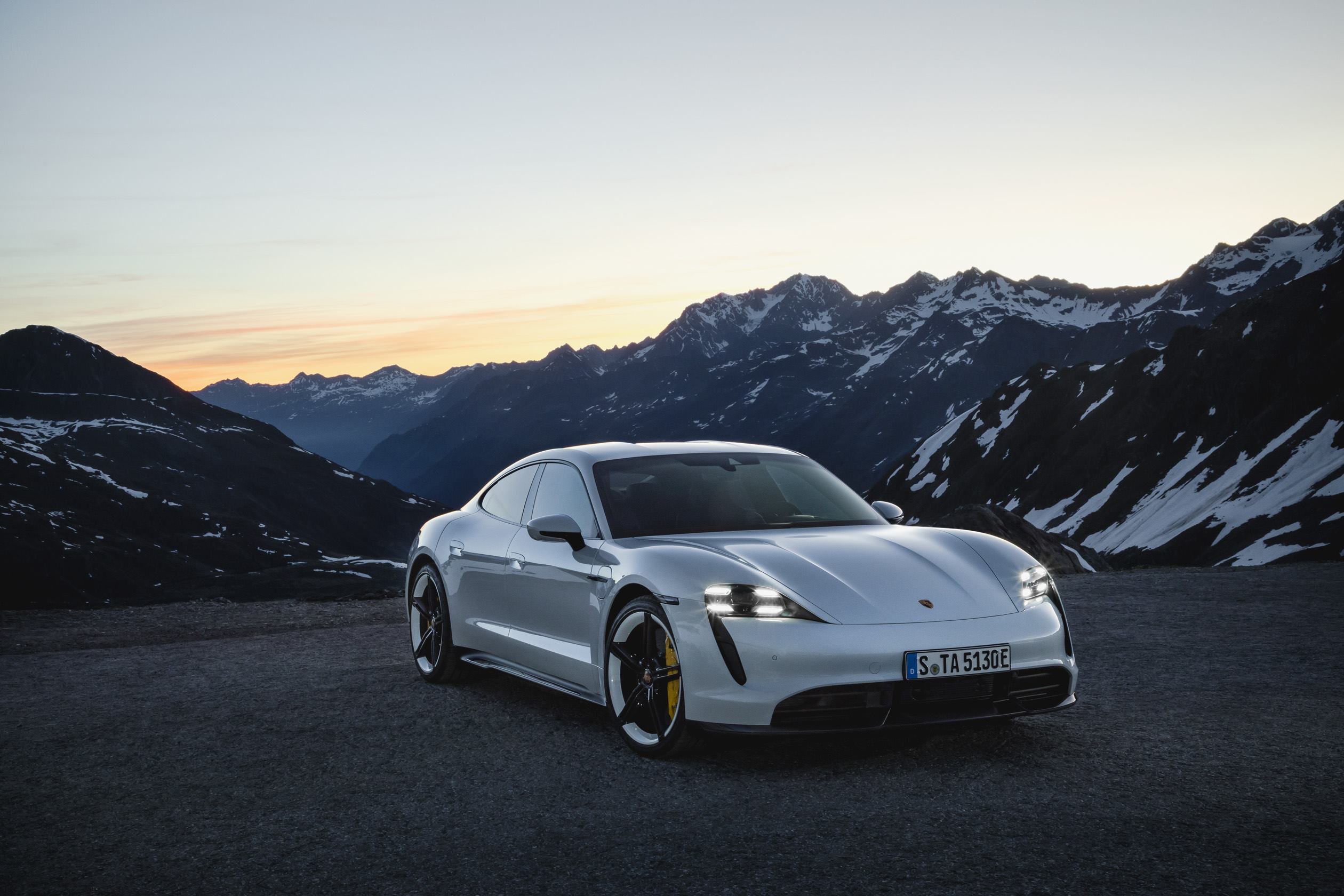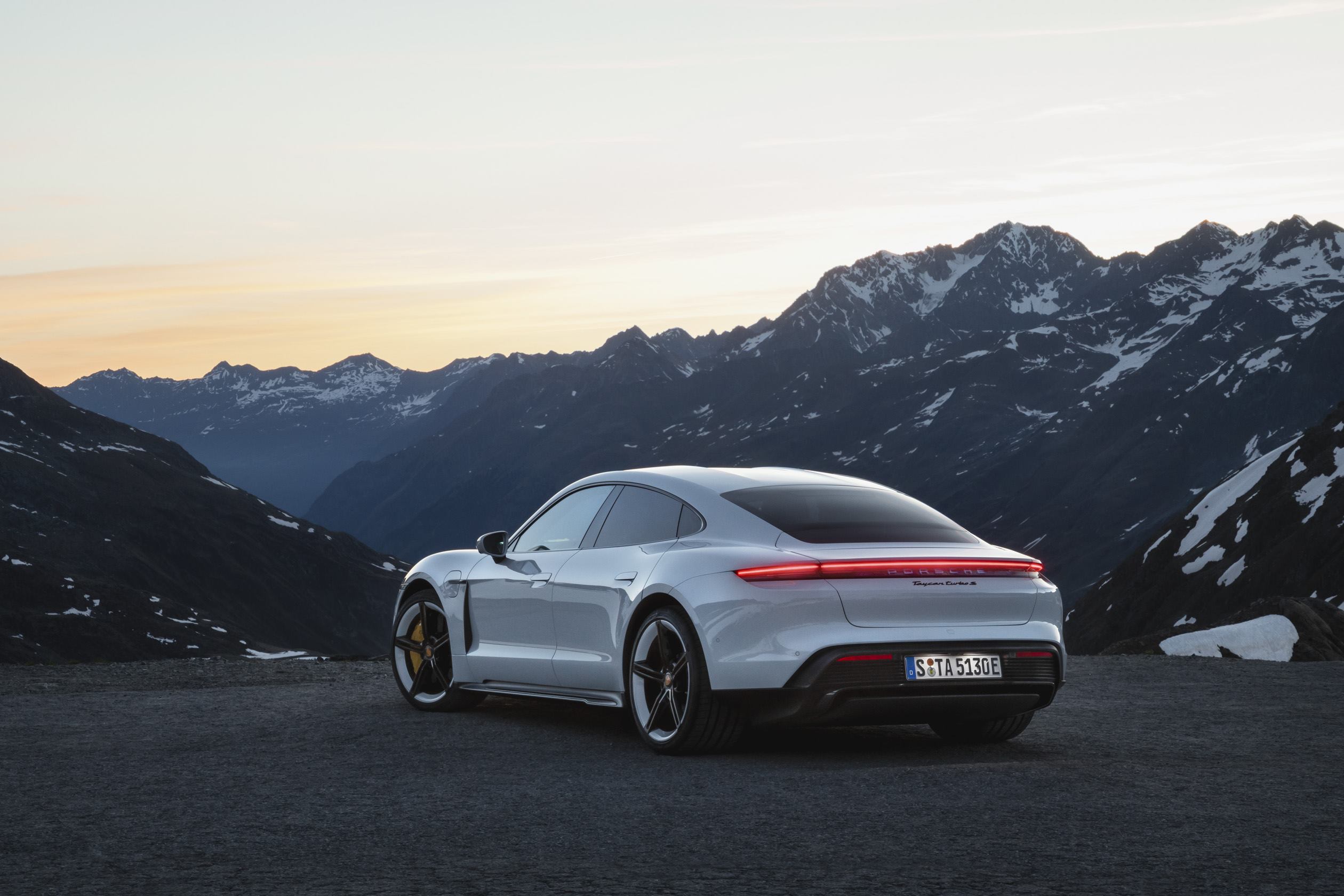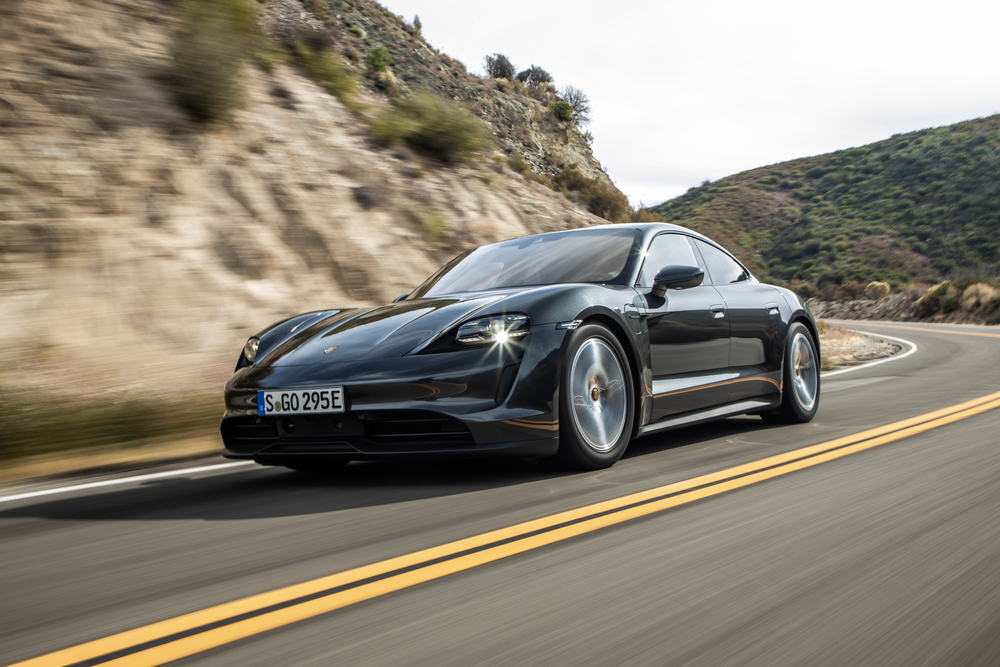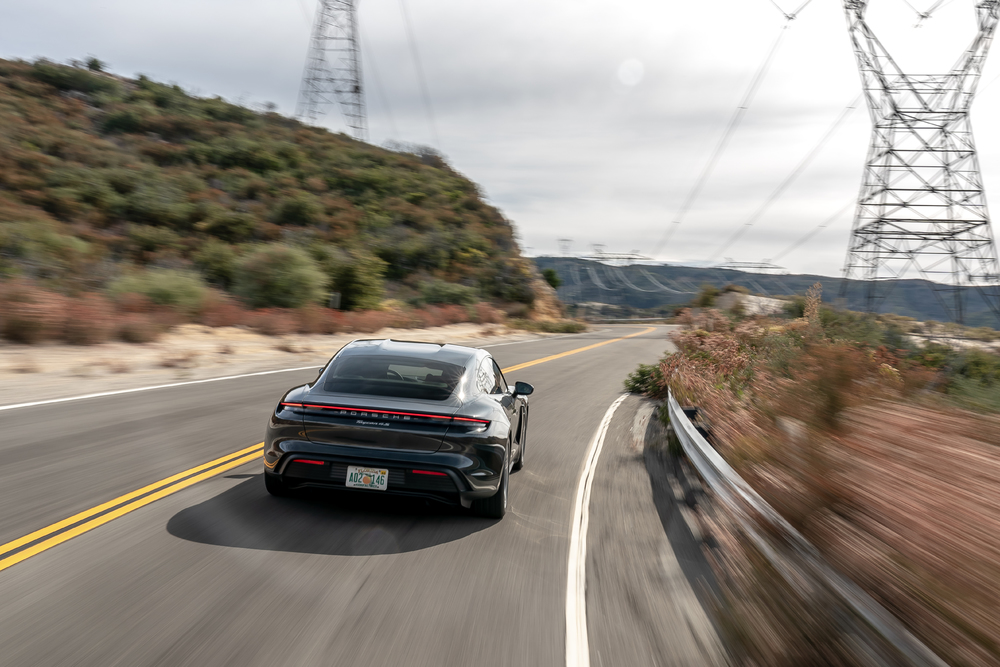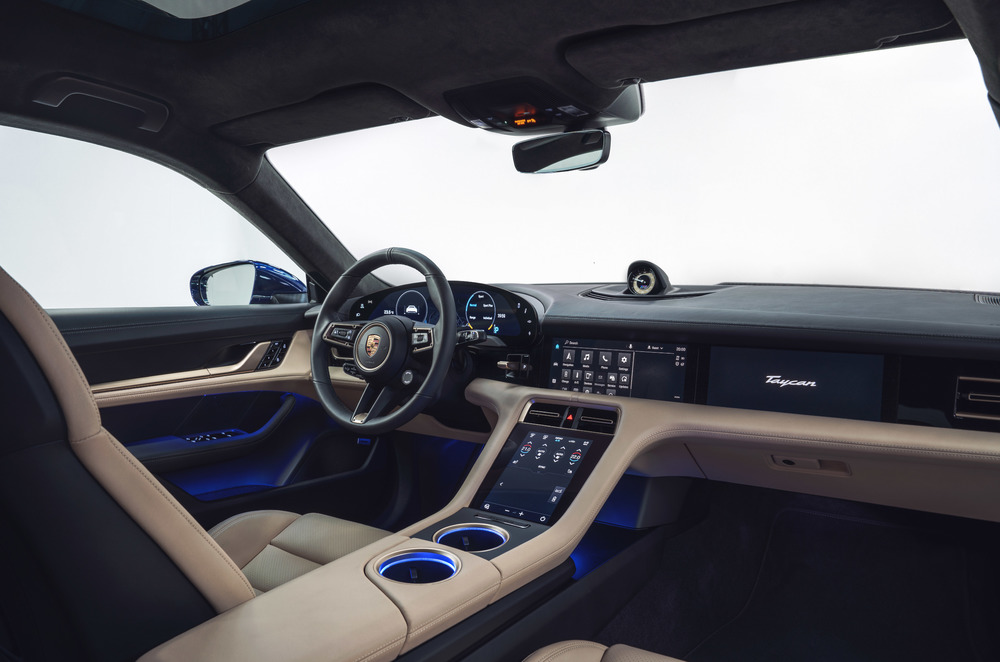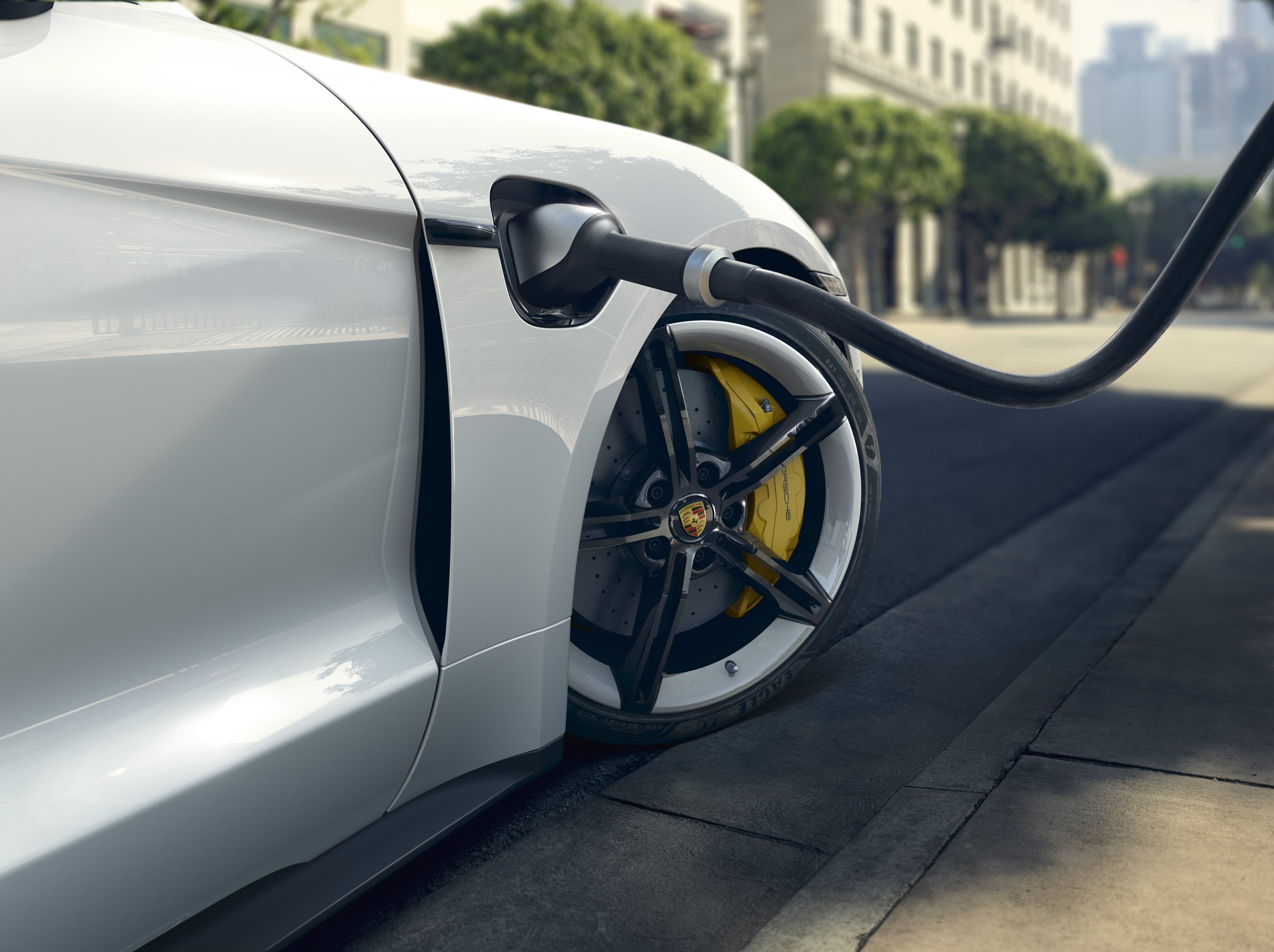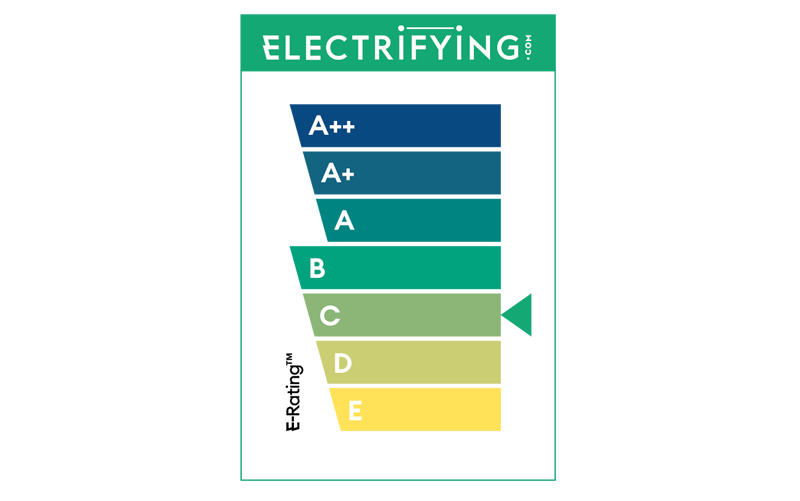Practicality and Boot Space
If you currently drive a sports car like a Porsche 911 and trade up to a Taycan, the amount of room inside will come as a pleasant surprise. It has decent enough space for four people (and you can squeeze in a fifth if you tick an option box on the order form), and has about as much space as a family hatchback in the boot (407 litres compared to a VW Golf’s 380 litres). There’s another ‘froot’ (front boot) which will take a soft bag or your charge cables too.
Inside you sit lower than in most of the Taycan’s electric rivals. The clever batteries require less cooling than conventional packs so have been made slimmer, improving the amount of space inside the car. They’ve even been specially shaped to increase the amount of legroom for passengers.
But the Taycan is not an SUV and it means it’s not as spacious or practical as taller electric cars such as the Jaguar I-PACE. Even the lower-riding Tesla Model S is substantially bigger inside than the Porsche.
Technology
As you might expect, the Taycan is one of the most advanced cars in the world. Much of the technology is packed away in the guts of the car, and some of it is reserved to make the car ‘future proof’ in terms of charging technology. Porsche knows that its customers won’t like to be kept waiting around to top up the batteries, so has designed it so that it can take on charge at rates which haven’t yet been invented.
Back in the present day though, the interior has all of the technology most people would demand, split over more screens that your local Multiplex cinema. There’s even an option for the front seat passenger to have their own touchscreen panel.
Be warned though – Porsche says most of its customers use Apple phones, so has only incorporated CarPlay technology. Android users will need to look elsewhere or connect the old-fashioned way.
Safety
Porsche’s engineers have built the Taycan from the ground-up as an electric car, so the frame has been designed to protect the passengers and the precious battery from damage in an accident. If a crash is detected, the whole electric system shuts down to prevent injury.
In addition, the Taycan has eight airbags as standard which should do a good job of protecting the front seat occupants. Disappointingly though, side airbags for the rear seats are extra-cost options. If you never carry passengers it might not be a concern, but it seems like a cynical cost-saving exercise.
To help prevent accidents happening in the first place, the Taycan has plenty of sensors and other technology to prevent collisions, but again there are a few gadgets that would make the car safer – such as lane keep assist, which prevents straying across white lines – which are packaged up and sold as pricey extras. It’s disappointing on a car at this price level.











